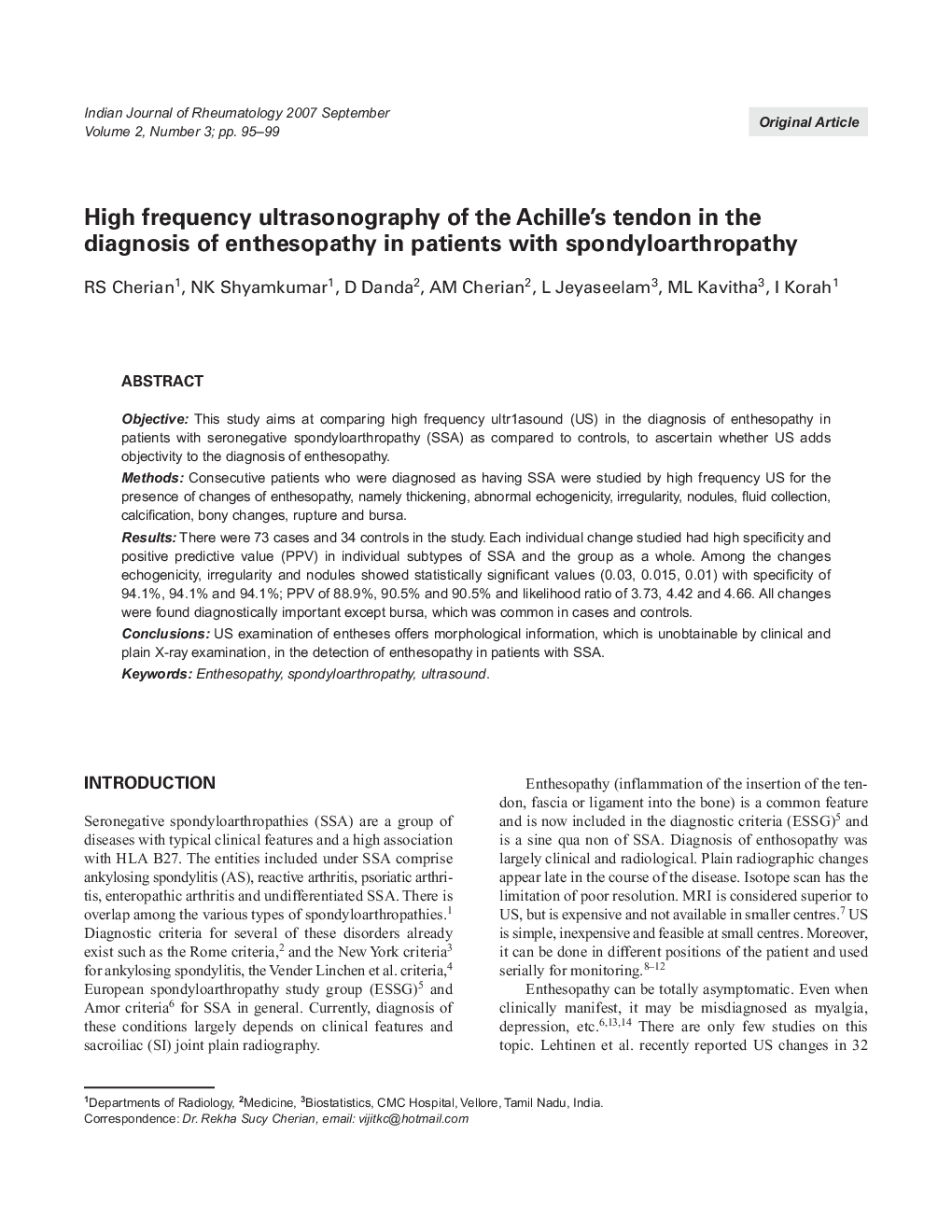| Article ID | Journal | Published Year | Pages | File Type |
|---|---|---|---|---|
| 3357993 | Indian Journal of Rheumatology | 2007 | 5 Pages |
ObjectiveThis study aims at comparing high frequency ultr1asound (US) in the diagnosis of enthesopathy in patients with seronegative spondyloarthropathy (SSA) as compared to controls, to ascertain whether US adds objectivity to the diagnosis of enthesopathy.MethodsConsecutive patients who were diagnosed as having SSA were studied by high frequency US for the presence of changes of enthesopathy, namely thickening, abnormal echogenicity, irregularity, nodules, fluid collection, calcification, bony changes, rupture and bursa.ResultsThere were 73 cases and 34 controls in the study. Each individual change studied had high specificity and positive predictive value (PPV) in individual subtypes of SSA and the group as a whole. Among the changes echogenicity, irregularity and nodules showed statistically significant values (0.03, 0.015, 0.01) with specificity of 94.1%, 94.1% and 94.1%; PPV of 88.9%, 90.5% and 90.5% and likelihood ratio of 3.73, 4.42 and 4.66. All changes were found diagnostically important except bursa, which was common in cases and controls.ConclusionsUS examination of entheses offers morphological information, which is unobtainable by clinical and plain X-ray examination, in the detection of enthesopathy in patients with SSA.
